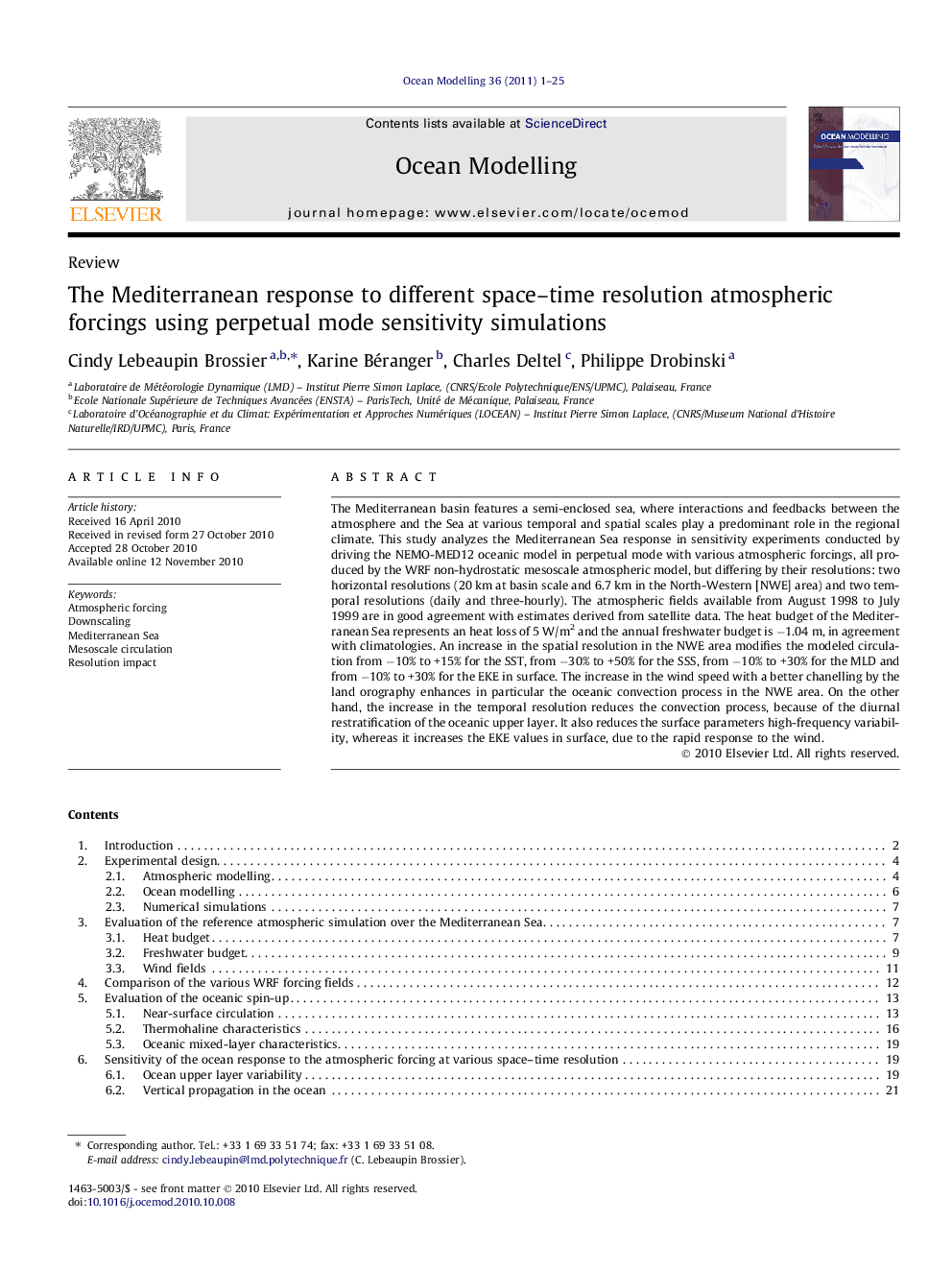| کد مقاله | کد نشریه | سال انتشار | مقاله انگلیسی | نسخه تمام متن |
|---|---|---|---|---|
| 4552302 | 1627809 | 2011 | 25 صفحه PDF | دانلود رایگان |

The Mediterranean basin features a semi-enclosed sea, where interactions and feedbacks between the atmosphere and the Sea at various temporal and spatial scales play a predominant role in the regional climate. This study analyzes the Mediterranean Sea response in sensitivity experiments conducted by driving the NEMO-MED12 oceanic model in perpetual mode with various atmospheric forcings, all produced by the WRF non-hydrostatic mesoscale atmospheric model, but differing by their resolutions: two horizontal resolutions (20 km at basin scale and 6.7 km in the North-Western [NWE] area) and two temporal resolutions (daily and three-hourly). The atmospheric fields available from August 1998 to July 1999 are in good agreement with estimates derived from satellite data. The heat budget of the Mediterranean Sea represents an heat loss of 5 W/m2 and the annual freshwater budget is −1.04 m, in agreement with climatologies. An increase in the spatial resolution in the NWE area modifies the modeled circulation from −10% to +15% for the SST, from −30% to +50% for the SSS, from −10% to +30% for the MLD and from −10% to +30% for the EKE in surface. The increase in the wind speed with a better chanelling by the land orography enhances in particular the oceanic convection process in the NWE area. On the other hand, the increase in the temporal resolution reduces the convection process, because of the diurnal restratification of the oceanic upper layer. It also reduces the surface parameters high-frequency variability, whereas it increases the EKE values in surface, due to the rapid response to the wind.
Research highlights
► Increasing the atmospheric model space-time resolution modifies the extremes.
► Improving the space-time resolution of the forcing affects significantly the variability of the mesoscale oceanic response.
► The finer space resolution modifies the mixed-layer characteristics and the thermohaline circulation.
► The short-range but intense variations in the high-frequency forcing produce significant energy into the upper layer that propagates deepwards.
Journal: Ocean Modelling - Volume 36, Issues 1–2, 2011, Pages 1–25